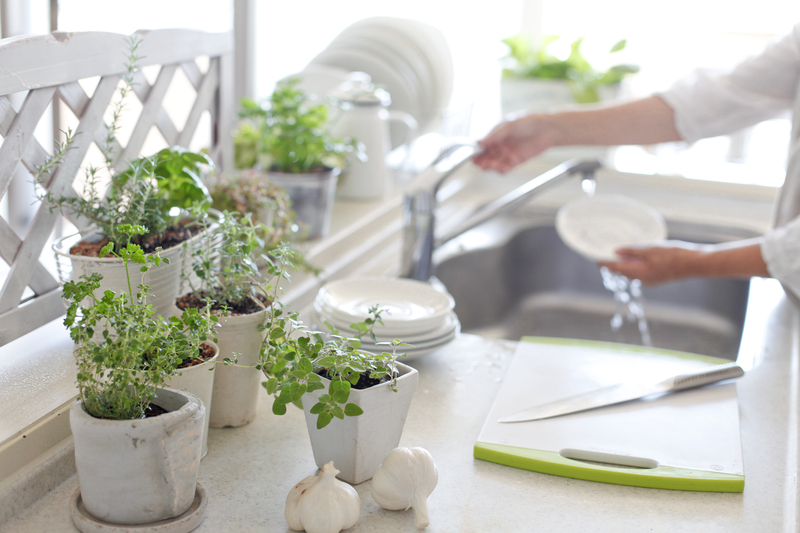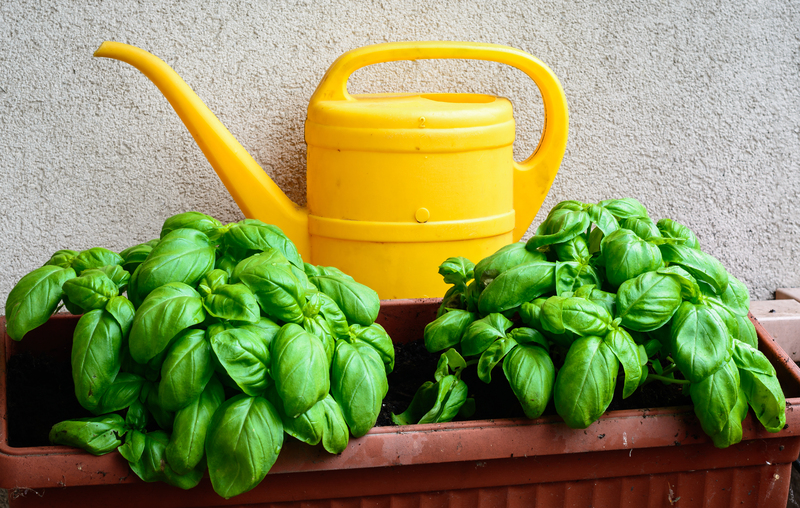Building a Safe and Engaging Garden for Children
Posted on 05/06/2025
Building a Safe and Engaging Garden for Children
A thoughtfully designed garden can be a magical place for children--inviting curiosity, supporting exploration, boosting physical activity, and nurturing a love of nature. A safe and engaging garden for children combines exciting elements with secure design principles, helping your kids grow and learn in a positive outdoor environment. In this comprehensive guide, we'll walk you through the steps to design a child-friendly garden that emphasizes safety while providing interactive and meaningful play experiences.

Why Create a Kid-Friendly Garden?
Creating a children's garden is more than just a landscaping decision--it's an investment in your child's development and overall well-being. Gardens for children in outdoor spaces foster:
- Imaginative play and creativity
- Physical development through movement and exploration
- Sensory experiences with textures, colors, and scents
- Learning opportunities about plants, insects, and nature
- Environmental stewardship and responsibility
- Quality family bonding time in a natural setting
However, safety must be at the forefront when designing an engaging children's garden. The following key steps outline how to achieve the perfect balance between adventure and security.
Planning Your Safe and Engaging Children's Garden
Location, Layout, and Visibility
Start by selecting a safe garden location for kids. Ideally, the space should offer good visibility from your home or a main outdoor area to ensure easy supervision.
- Choose a flat, secure area: Steep slopes and rocky patches can increase the risk of falls and injuries.
- Clear hazardous objects: Remove sharp tools, toxic plants, or anything that poses a threat to curious hands and feet.
- Enclose the garden: Use fences or natural barriers like hedges to mark boundaries and keep kids safe from busy roads or ponds.
- Plan for shaded areas: Incorporate trees, pergolas, or umbrellas to protect children from excessive sun exposure while playing outdoors.
- Create clear pathways: Design wide, soft walkways (mulch or rubber mats work well) that are easy for little ones to navigate and reduce tripping risks.
Child-Friendly Garden Zones
Divide your child-focused garden into zones to cater to different ages and interests:
- Active play zone: For climbing frames, swings, or balance beams (with soft landing surfaces).
- Sensory garden area: Filled with aromatic herbs, colorful flowers, and different textured plants for tactile exploration.
- Wildlife corner: To observe bugs, birds, and butterflies, sparking curiosity about nature.
- Quiet nook: A cozy reading space or hidden den for reflection and rest.
- Vegetable or herb patch: Involve kids in the process of planting, watering, and harvesting to teach responsibility and healthy eating.
Top Safety Considerations for a Child's Garden
1. Plant Selection
Choosing child-safe plants is critical. Avoid species that are toxic, prickly, or have berries that could be mistaken for food. Good picks for a safe, engaging garden include:
- Sunflowers -- Tall, cheerful, and fun to grow.
- Sensory herbs like mint and lavender -- Soft to touch, aromatic, and non-toxic.
- Marigolds and nasturtiums -- Edible flowers that are safe for tasting and vibrant for visual interest.
- Grasses and ferns -- For soft textures.
Always check local plant toxicity lists before planting. If unsure, consult with a nursery or horticulturist. Teach children not to eat anything from the garden unless given permission.
2. Tools, Chemicals, and Equipment
- Lock away tools and fertilizers: Store all gardening tools, sharp implements, and chemicals in a securely locked shed or storage unit, inaccessible to children.
- Avoid chemical pesticides: Opt for organic, non-toxic methods to keep pests at bay and ensure the healthiest environment for children.
- Use child-appropriate tools: Invest in small, lightweight garden tools designed for kids' hands for fun, safe involvement in planting and care.
3. Water Safety
Ponds, water features, and even buckets of water can be a drowning hazard for young children. Consider:
- Avoid deep ponds: Instead, offer shallow birdbaths or water tables for safe water play with supervision.
- Install covers: Use safety covers or fencing for any permanent water features.
- Drain containers: After use, empty buckets, watering cans, and other containers that collect water.
4. Surfaces and Materials
Choose ground coverings that buffer falls and prevent injuries:
- Grass, bark chips, or rubber mulch: These are soft and forgiving underfoot for active play.
- Avoid sharp gravel and concrete: These can scrape or cut if a child falls.
5. Allergies & Sun Protection
- Know your child's sensitivities: If your child has allergies, avoid high-pollen plants and monitor for reactions to new species.
- Encourage hats and sunscreen: Even in shaded gardens, prolonged outdoor play requires protection from UV rays.
- Provide shade structures: Pergolas, shade sails, or well-placed trees can make your garden safer and more comfortable in hot climates.
Adding Engaging Features to Your Kid's Garden
Incorporate Natural Materials
A stimulating outdoor environment often relies on natural elements to captivate and inspire:
- Logs and stones: For climbing, sitting, or creating mini habitats.
- Sand or mud kitchen: A designated play area for messy, imaginative fun.
- Willow tunnels or living teepees: Create secret spaces and hiding spots that blend into the landscape.
Creative Play and Learning Opportunities
- Fairy or dinosaur gardens: Small zones themed with figurines and plants for storytelling and role play.
- Obstacle courses: Use stepping stones, balance logs, or tunnels to encourage movement and coordination.
- Musical elements: Hang recycled chimes, pots, or install outdoor xylophones for sound exploration.
- DIY art stations: Set up a weatherproof easel or paint rocks and pots for crafty, hands-on creativity.
These interactive components make your engaging garden for children a place your kids will want to visit again and again.
Gardening Activities to Get Kids Involved
Age-Appropriate Gardening Tasks
- Toddlers: Watering plants, digging with small trowels, collecting leaves and sticks, or filling birdfeeders.
- Preschoolers: Planting seeds, harvesting vegetables, or decorating plant markers.
- Older children: Planning layouts, pruning (with supervision), composting, and learning about lifecycles.
Sensory and Educational Activities
- Plant a rainbow garden: Select flowers in every color and plant in rainbow order for a striking learning display.
- Grow edible plants: Cherry tomatoes, strawberries, peas, or beans are delicious and fun to pick.
- Biodiversity scavenger hunts: Give kids a list of bugs, birds, or plant types to find in the garden.
- Nature diary: Encourage children to draw or write about what they discover during each season.
These activities connect children with nature while teaching responsibility, patience, and observation skills.
Long-Term Care and Supervision in a Child's Garden
Safe and Ongoing Maintenance
- Regularly check for hazards: Inspect for loose nails, splintered wood, or overgrown plants.
- Keep paths clear: Trim overhanging branches and weed walkways to prevent tripping.
- Supervise play: Remain nearby or within sight, particularly with active play equipment or water features.
Adapting the Garden as Children Grow
A garden for children should evolve as their needs change. Remove baby swings and introduce new challenges like climbing walls or larger vegetable beds. Involve your kids in redesigning or replanting areas to foster a sense of pride and ownership.
Eco-Friendly Approaches to a Child-Friendly Garden
Promoting Sustainability and Stewardship
- Composting: Teach children to recycle garden waste and food scraps.
- Rainwater harvesting: Use water butts to collect rain for irrigating plants.
- Pollinator-friendly plants: Attract butterflies and bees with a variety of nectar-rich flowers.
- Bug hotels and nesting boxes: Encourage beneficial insects and birds to take up residence in your garden.
These initiatives introduce basic concepts of ecology and responsibility, illustrating the importance of caring for the planet.

Common Questions on Kids' Garden Safety and Engagement
How do I make my garden safe for toddlers?
- Install secure fencing and use gated entry points.
- Remove all choking hazards and toxic plants.
- Use soft, non-slip ground cover and avoid standing water.
- Always supervise outdoor play.
What are the best plants for a child's garden?
- Sunflowers, nasturtiums, marigolds--bright, fun, and safe.
- Mint, basil, and lettuce--edible and easy to grow.
- Strawberries and cherry tomatoes--delicious and red-fruited for sensory picking.
How do I encourage kids to play in the garden?
- Include interactive elements like sand pits, water tables, and themed zones.
- Let them plant and care for their own patch.
- Involve them in garden design and seasonal changes.
Conclusion: Creating Lasting Childhood Memories in the Garden
Building a safe and engaging garden for children is a rewarding task that offers lifelong benefits. With strategic planning, attention to safety, and a focus on imaginative play, your outdoor space can become an inspiring environment for growth and discovery. Whether your child is tending a sunflower, watching a butterfly, or simply exploring with friends, a well-designed children's garden promises hours of healthy play, relaxation, and learning--right on your doorstep.
Get started today and enjoy watching your kids bloom alongside your garden!



